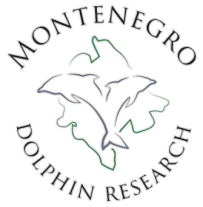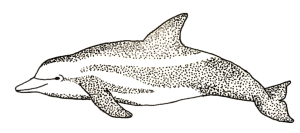The “Genoa 4” captured media and public attention and turned, seemingly overnight, from an exciting instance of nature interacting with humans to a cause for continent-wide conservation conscern. Research Assistant Francesca Soster explores the saga that taught us a lesson of synergy and cooperation. As the DMAD team was concluding the winter leg of its annual Giant Guardians of the Deep Sea Expedition, in the Ligurian Sea another – somewhat unexpected – giant guardian of the deep was emerging nearby . The appearance, that not only drew the attention of the international science community, would captivate the citizens of coastal countries overlooking the entire Mediterranean basin and lead to unforeseen advances in migratory research of marine mammals. On November the 30th 2019, a pod of killer whales appeared in the commercial port of Prà-Voltri in the city of Genoa, Italy; an area where marine traffic is intense and where no one would expect to see these charismatic and magnificent animals. Although this wasn’t actually the first time that killer whales have appeared in the Ligurian waters, the exciting but tragic events that transpired made this particular appearance even more extraordinary. The “Genoa 4” with the calf in the initial momentsafter their appearance in the port of Genoa The whales were initially spotted underwater by a spear fisher, who immediately surfaced when the huge male took him by surprise and, as soon as he got into his RIB, took a video that went viral in a few hours. These amazing creatures were soon warmly and happily welcomed by the curious local people and by those who went to Genoa from far away just to see them, with their eyes wide open and ready for this uncommon show. Those black fins in front of the Genoese buildings looked quite surreal . Scientists from different research associations that operate in the Pelagos Sanctuary, together with the Coastguard, veterinarians from Genoa Aquarium, and biologists working for local whale watching companies immediately pulled together and coordinated to collate data and information. However, the excitement and curiosity for such an incredible sighting turned rapidly to concern: the pod counted five individuals, of which one was a calf. Many hypotheses were formulated to suggest why the pod didn’t seem to be leaving the harbour. It turned out that the health conditions of the calf were critical. The Italian Ministry of the Environment immediately issued the order to stop marine traffic in the area, along with the claim that the preservation of biodiversity had to be the priority of politics. The whales were monitored throughout the days by researchers. On social media, beyond the hype, many people showed interest, love and concern for this family, whilst other people followed its story through the lens of their cameras and binoculars , standing on the beach and the big rocks of the port. SN114 “Zena” with her dead calf Sadly, despite the measures and the great job the authorities did to keep the animals undisturbed, the calf died, and a heart-breaking funeral rite lasted until the mother grieved the loss and released its body after carrying it for days, holding its pectoral fin. The whales were visibly exhausted, hardly moving, surfacing rarely and slowly, occasionally showing discomfort and nervousness by slapping their tails. The high levels of social interaction among killer whales (which is now known to be a key behavioural trait of the species), was shown once again by their sophisticated sensitivity through the pain and sorrow felt by the members of the pod. Meanwhile, scientists from different parts of the world combined their efforts to find an answer to the questions that were still pending: who are they and where did they come from? A synergetic work of data-sharing began, and the engagement of the international community of marine mammologists was further facilitated by the convening first World Marine Mammal Conference, which was coincidentally taking place in Barcelona during the same period. Although it was hard to believe there could be a match over such a long distance, the researchers of Orca Guardians, a non-profit organisation based on the West coast of Iceland, made contact with several organisations in Italy in order to get high quality pictures and to try to match them with a catalogue of more than 300 individuals of the West Iceland killer whale population. Marie Thérèse Mrusczok, founder and head of the organisation, could clearly recognize and identify the four individuals thanks to the incredible level of international cooperation. In particular, the work conducted by Italian NGOs Menkab: Il Respiro del Mare and Tethys Research Institute made identification possible through the sharing of their survey photos, together with the support of the University of Genoa, the Port Authority and other stakeholders . On December the 16th, the match of the “Genoa 4” was complete: Riptide (SN113), a fully grown male, Aquamarin (SN116), a juvenile, Dropi (SN115), whose sex has not been identified yet, and the female (SN114) that lost her calf, have been regularly spotted in Iceland from 2014 to 2018. A quick poll was launched by Orca Guardians on their social media to select a name for the female (SN114). The name Zena, which means precisely ‘Genoa’ in the local dialect, was chosen. When the killer whales left the Geonese port, their movements maintained a strong public attention thanks to the hopefulness to see them taking their way back to the Icelandic waters. The Italian public followed their progress, recording sightings and submitting updates and pictures, giving a great example of how science can benefit from an asset like citizen science, by getting citizens and enthusiasts engaged through the involvement in this irregular occurrence. In January, orcas were spotted in different areas of Italy, from north to south, but the adverse weather conditions prevented local researchers from getting pictures until a huge black fin was spotted in another far and unexpected area of the Mediterranean Sea. On the 10th of February, sadly, a dead killer whale was found on the shore of Sarafand in Lebanon. Speculations were made as to which member of the

